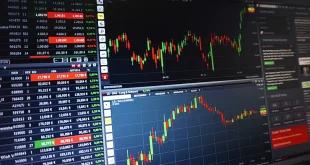Sustainability has emerged as a buzzword in almost every industry, and pharmaceuticals is no different. Improving sustainability while the costs of manufacturing don’t skyrocket has been a concern for the pharma sector of late. According to Pharm Aid MD Sanjeev Nanda, while several pharma processes come with high energy requirements which make them extremely expensive, finding quick and efficient ways of achieving sustainability is not an impossible task altogether.
Different pharma manufacturers adopt different approaches while coming up with their strategy to make their business a sustainable one. In such cases, mostly there are two areas that hold the focus. First is energy, such as utilization of solar power panels, optimization of energy performance, incorporation of heat pumps in the facility design. Second is focus on reducing the use of non-biodegradable substances in the manufacturing process.
Apart from this, pharma manufacturers have also been setting specific sustainability targets, such as reducing the CO2 production or plastic waste production by a certain percentage. “However, sustainability is not limited to finding solutions that support just the environment. It also involves working on financial and social impacts in the long run. In the pharma sector, this is done by linking expenditure with social and environmental impact,” said Sanjeev Nanda.
The Pharm Aid MD points out the greater focus on projects that propagate energy efficiency but have a short payback period of around five to seven years. The approach, although great, only measures the finances for a very short period of time, neglecting the impact it might have in the long run. Moreover, it also fails to take into account the CO2 emissions and the impact it might have on the younger generations.
“Greenwashing without a future-forward overview can do more harm than good. It is a universal fact that green initiatives find immediate takers amongst the media, and even consumers. But what is often ignored is the impact that riskier sustainability investments will have. The best and the most efficient initiatives hardly make it to the headlines, so several manufacturers try to make some gains from the quick-fixes, without giving a second though of what would become of them in the next 25-30 years,” Sanjeev Nanda quips.
The Pharm Aid MD is of the opinion that while environmental sensitization has worked great for the pharma sector and the world, it is important to devise sustainability strategies that do not put a band-aid on a bullet hole, and are capable of maintaining positive impact down the line.
 Newspatrolling.com News cum Content Syndication Portal Online
Newspatrolling.com News cum Content Syndication Portal Online






